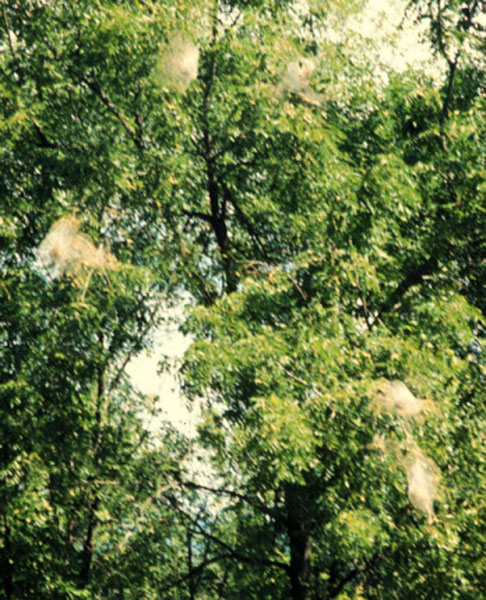Cankerworms (inchworms) cause defoliation in shade trees. They are found on elm, apple, hackberry, basswood, oak, boxelder, maple and ash trees as well as shrubs growing beneath heavily infested trees.
Young, newly transplanted, or weak trees have more chances of injury from defoliation.
If a tree is defoliated for three consecutive years, the branches of the tree can die, making the tree very weak.
Pesticides can be used when the caterpillars are small (around the second week of feeding), for two reasons: to protect trees and; to eliminate the presence of cankerworm moths around homes.
Spring and fall cankerworms feed at the same time of year on the same trees causing the same kind of damage. Feed on buds and expanding leaves right after egg hatch in the spring. These creatures create small BB-sized holes (about 4.4 mm) in the leaves. As the larvae grow, holes get bigger until all the tissue between the veins is eaten up.
Information source: https://extension.umn.edu
























